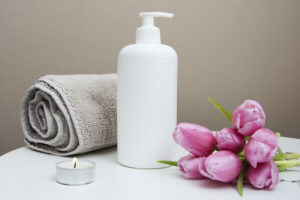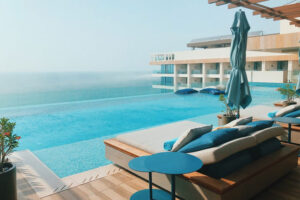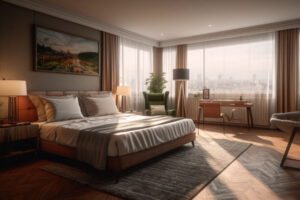Mastering Hotel Event Photography: A Comprehensive Guide
Michael • April 1, 2024 • 6 min read

Weddings, conferences, fundraisers – these events deserve photos that truly capture the magic. As a photographer, you have the power to freeze those special moments in time, creating a lasting legacy for both guests and the venue itself.
This comprehensive guide equips you with everything you need to master hotel event photography. From gear essentials to lighting tricks, composition secrets to post-processing finesse, we’ll cover it all. Get ready to transform fleeting moments into unforgettable memories. Let’s dive in!
Content
1. Essential Photography Equipment for Hotel Events
While fancy gear can’t guarantee great photos, having the right tools goes a long way in hotel event photography. Here’s a rundown of the essentials:
- Camera: A DSLR or mirrorless camera with interchangeable lenses offers the most flexibility. Even high-end smartphones can capture decent photos in good lighting.
- Lenses: A versatile zoom lens (like a 24-70mm) lets you capture wide group shots and close-up details. A prime lens (like a 50mm) is great for low-light situations and creative portraits.
- Flash: Built-in camera flashes often create harsh light. Consider an external flash with a diffuser to add soft, flattering light, especially in dimly lit ballrooms.
- Extra Batteries & Memory Cards: Running out of juice or storage space at a crucial moment can be disastrous. Pack backups!
- Tripod (Optional): For sharp photos in low light or long exposure shots, a tripod offers stability. A monopod is a more compact alternative for some situations.
Mastering your camera and understanding lighting are more important than having the most expensive gear.
Readers are also interested in:
Hotel Room Photoshoot
Benefits of hotel photography
Luxury Resort Photography
Hotel Lobby Photography
Hotel Lifestyle Photography
Hotel Photo Ideas
2. Preparing for the Event
Preparation is key to capturing the essence of a hotel event. Here’s what you should do beforehand:
- Scout the Venue: Walk through the event space beforehand, noting potential photo opportunities like backdrops, natural light sources, and potential obstacles.
- Review the Event Schedule: Knowing the flow of events (speeches, presentations, meals, etc.) allows you to anticipate key moments and be in the right place at the right time.
- Communicate with Organizers: Discuss their expectations, any restrictions (like no flash during speeches), and important people they want you to capture.
- Plan Your Shots: Create a mental shot list or even a quick sketch to visualize the kind of photos you want to capture. This helps you stay focused during the event.
3. Composition Techniques for Capturing Stunning Photos
Composition refers to how you arrange elements within your photo frame. Here are some basic techniques that elevate your hotel event photography:
- Rule of Thirds: Divide your frame into a 3×3 grid. Place key subjects at the intersection points for a more balanced and visually pleasing composition.
- Leading Lines: Use natural lines in the environment (stairs, railings, table edges) to draw the viewer’s eye into the photo and towards the subject.
Fill the Frame: Get close to your subject to create a sense of intimacy and eliminate distracting background elements. - Negative Space: Utilize empty space around your subject to emphasize them and create a sense of calm.
- Vary Your Angles: Don’t just shoot from eye level! Experiment with low angles for dramatic portraits or high angles for expansive crowd shots.
Keep in mind, these are just guidelines. Don’t be afraid to break the rules for creative impact!
4. Mastering Hotel Event Lighting
Hotel event lighting can be both a blessing and a curse for photographers. Here’s how to navigate it:
- Understanding Lighting: Most hotel event spaces have complex lighting setups that can cast harsh shadows or create an unflattering color cast. Familiarize yourself with the venue’s lighting controls (if possible) to adjust brightness and color temperature.
- Embrace Available Light: Learn to work with the existing lighting. Look for areas with natural light for a more natural look or bounce flash off walls or ceilings to soften its impact.
- Bring Your Own Light: A portable flash with a diffuser can be a lifesaver, especially in dimly lit ballrooms. Experiment with off-camera flash techniques to add depth and dimension to your photos.
- Communicate with Lighting Technicians: If the venue has dedicated lighting technicians, politely discuss your needs. They might be able to adjust some lights subtly to improve your photo opportunities.
5. Candid and Posed Photography
Hotel event photography thrives on capturing both candid and posed moments:
- Candid Photos: These are natural, unstaged shots that capture the emotions and energy of the event. Look for genuine interactions, laughter, and heartfelt moments.
- Posed Photos: While candid moments are gold, posed photos ensure you capture key people and groups. Collaborate with organizers to create a shot list for family portraits, award presentations, or group photos with the venue as a backdrop. Pro tip: Give clear instructions for posed shots, but keep them relaxed and natural for a more genuine feel.
By combining candid and posed photography, you tell a complete story of the event, showcasing its essence and the people who made it special.
6. Post-Processing Tips for Hotel Event Photos
Post-processing helps transform good photos into great ones. Here are some quick tips for hotel event photos:
- Basic Adjustments: Use editing software to tweak exposure, white balance, and color for a natural look.
- Selective Adjustments: Brighten specific areas (like faces) or darken distracting backgrounds for better balance.
- Cropping & Straightening: Tighten compositions by cropping and ensure horizons are level for a professional feel.
- Noise Reduction: In low-light photos, software can help reduce grainy noise for a cleaner image.
- Presets: Presets can streamline your workflow, but use them subtly to avoid overly processed-looking photos.
The goal is to enhance your photos, not drastically alter them. Aim for a natural and polished final product.
Conclusion
Hotel event photography allows you to freeze special moments in time, creating lasting memories for guests and showcasing the magic of your venue. With the right preparation, equipment, and techniques, you can capture stunning photos that tell a captivating story.
This guide provides a foundation, but remember, the best way to improve is through practice. So, grab your camera, get out there, and start clicking!
Do you have any questions about hotel event photography? Share your experiences or challenges in the comments below. The photography community thrives on learning from each other, so let’s keep the conversation going!
Popular hotels known for event hosting:
- Hilton Hotels & Resorts: Hilton is a well-known hotel chain that offers excellent event hosting services. Website
- Marriott Hotels & Resorts: Marriott is another renowned hotel brand that caters to various events and conferences. Website
- Hyatt Hotels Corporation: Hyatt Hotels is known for its upscale event spaces and services. Website
- InterContinental Hotels & Resorts: InterContinental Hotels provides sophisticated venues for events and conferences. Website
- Sheraton Hotels & Resorts: Sheraton Hotels offers versatile event spaces and amenities for hosting different types of events. Website
- Radisson Blu Hotels & Resorts: Radisson Blu is known for its contemporary venues and event facilities. Website
- Four Seasons Hotels and Resorts: Four Seasons is a luxury hotel chain that provides upscale event hosting services. Website
- Ritz-Carlton Hotels: Ritz-Carlton is renowned for its elegant and high-end event spaces. Website
- Fairmont Hotels & Resorts: Fairmont Hotels offers a range of event venues suitable for both corporate and social gatherings. Website
What is your take on Hotel Event Photography? Let us know in the comments.
Related Articles
Your thoughts and questions










